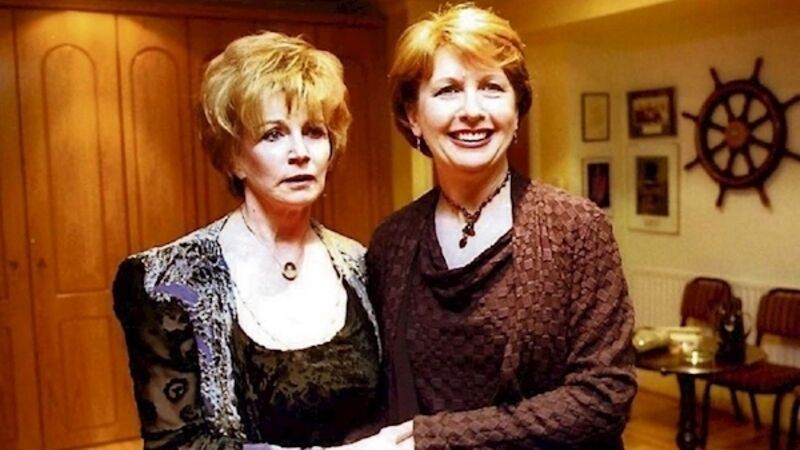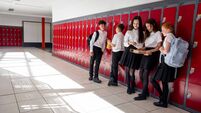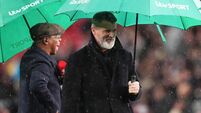Gerard Howlin: The arts reflect our nation’s soul, and have been badly neglected

Culture will hardly feature in the first head-to-head debate between incumbent Taoiseach Leo Varadkar and the challenger, Micheál Martin, on Virgin Media Television tomorrow night.
Artists are showcased to suit the State, but politically they are decorative attendants only. Art is a tool to do other things. It is too little understood or valued for itself. It is showcased on big occasions, but an understanding of the value of a deeper experience is absent.
In its swagger, Ireland is a land of art. In reality, it is measly in its treatment. That is to speak only of money. The greater abuse is the lack of regard, the recurring tokenism and the cascading condescension of power towards creativity. Political debate purports to know the cost of everything, but its sense of value is limited.
Asking the question of how culture relates to citizenship, understanding that access to art is essential to freedom of speech, and that life deprived of culture is fundamentally deprived, is lacking in our election debate.
The next government has a choice. Will it continue to pay lip service, but then fail to deliver, or will it understand that artists, and the life enhanced by cultural experience, is can be the making of a richer republic?
It is richer in insight, in understanding, and in its public conversation. Most importantly, it is richer in the lives lived, enlivened by insight that only artists provide. It is immeasurable, however, and thence it is not accounted.
Taking the long view, there is relatively little that distinguishes this Government from most of its predecessors on the arts.
As arts ministers, Michael D Higgins and John O’Donohoe were arguably two who left an indelible mark. Higgins was the first-ever and he brought eloquence, policy, and a passionate sense that this was the mainstream of a life well-lived. O’Donohoe, meanwhile, put the architecture of the Arts Act in place.
He established Culture Ireland and he put the traditional arts, dance, architecture, and more on the agenda of the Arts Council.
In hindsight, they were exceptions. There has been goodwill certainly, but no concerted focus. No other minster has been was as effective for the arts at the cabinet table.
Cuts, commodification, and centralisation characterised much of the past nine years. There was an economic crash, of course, so arts cuts were inevitable. It was their disproportionate nature that betrayed the recurring lack of value.
Commodification may ultimately be more insidious. It is about the flattening of art, so that it is scenery to decorate power and money. The intensifying emphasis on presentation by official Ireland over the last few years purports to be support for the arts, but it is usury.
There was no commensurate interest in or support for the artists, their practice, or the ecosystem in which — interdependent on one another — creative people and projects are inculcated and thrive. The arts are not an unending series of first nights. They are long days of experimentation, effort, and frequent failure.
They are days on which artists must eat, live, pay rent, have a place to work, and hope for a decent life in the surrounding society.
Centralisation seriously undermined the arm’s-length principle that must separate the State from its own power of patronage, and accompanied commodification. They are two prongs on the same fork.
Culture Ireland, to support Irish arts abroad, was intended at its creation to be statutorily independent, but remains a wholly-owned subsidiary of the department. Its original outside director was replaced by a civil servant.
Creative Ireland, an overarching umbrella for a slew of ministerial cultural initiatives, is likewise another wholly-owned subsidiary of the department. The restraint which absolutely must characterise the relationship between the arts and the State, was breached. Lest we think that was an accident of events, we should remember the determined effort to abolish the independent boards of our national cultural institutions, and bring them under the direct control of the minister.
There was an impetus and it was deeply unhealthy. It has abated perhaps, but what it created remains. It is under direct ministerial control, and it is this that must be relinquished.
Artists to do not need to be parented or patronised. Too much State patronage has an undertone of infantilisation. It is the insecurity of the newly arrived who use culture to accessorise.
When Leo Varadkar set out to become leader of Fine Gael, eyes wide open to our economic situation and to Brexit, he promised to double funding for the arts. He wore the arts as an appendage.
That was 2017. That promise is so off-course already as to be improbable. But it is not impossible. It needed €11m a year for seven years. This year, €5m was provided. But more than €3m of the five was spoken for, because it came with responsibility for functions in the department.
To get back on track, €17m extra is needed for 2021. That would bring Arts Council spending to €97m. In 2007, there was an ambitious plan to reach €100m. The arts in Ireland is in freeze-frame mode.
I want Varadkar and Martin to spell out exactly what they will do, and when. They should be put on the spot tonight. The promise to double funding was unforced, but it was part of a political programme. Its almost instant aberration makes playthings and ragdolls of some of the most talented people in our country.
Most subsist on a pittance. But their toil is our enlightenment and entertainment. The pipers must be paid.
We should insistently ask over the coming weeks if the expansion of patronage and control in the department, directly under the minister, will be reversed.
We should ask if promises, made so recently and so freely, will be kept at all. We should corner the opposition and tell them that we are not interested in their carping about the Government, we can do that ourselves. We want to know exactly what they propose to do.
Then there is the miasma of promised capital expenditure for the Abbey, the National Concert Hall, the Irish Museum of Modern Art, for the Crawford, and other projects around the country.
Boxes of plans are accumulating, but there are no cheques in the post. Any discerning student of the sub-terrain of public administration will instinctively recognise sense the holding pattern. Clarity is required.
Artists are like lungs full of oxygen in life. They provide another language and an extra sense. Fifty-four years ago we marked the 50th anniversary of 1916. In hindsight, the great figures of the era were young renegade artists.
Enda O’Brien and John McGahern were published and banned in short order. But the future was theirs. The previous year Roger Casement was reinterred in Glasnevin Cemetery.
Black guarded in death, he was then whitewashed by the State. But the truth will out.
It comes first not as fact, but as insight. It is this that art is for.













